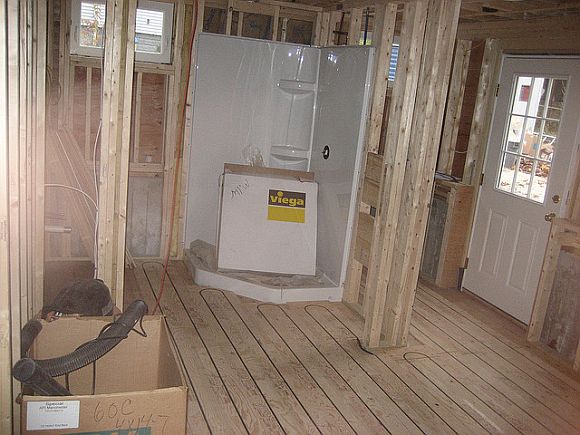
The majority of homeowners use a forced-air system to provide heating and cooling. Yet more and more are turning to radiant heat for several reasons, including its superior heating power, energy efficiency and, in the long-term, reduced energy costs.
Radiant heating can be installed in several places, but is typically found in a home’s floor. The heat supply can also be connected to panels in the wall or ceiling, and, according to the U.S. Department of Energy, “radiant heating is the effect you feel when you can feel the warmth of a hot stovetop element from across the room.”
If you’re considering installing radiant heating in your home, you’ll need to select a type. Air-heated radiant floors are typically found in combination with some sort of solar air heating system, according to the U.S. Department of Energy, but “because air cannot hold large amounts of heat, radiant air floors are not cost-effective in residential applications.”
Instead, opt for electric radiant floors, which are powered by electric cables installed underneath the flooring and work best if your home has a thick concrete floor. The most popular radiant heat source is a hydronic system, which relies on heated water that’s pumped from a boiler throughout the system’s tubing.
You’ll need to decide if installing radiant heating is something you’re up to tackling. Often, the project requires demolition of the existing floor in order to install the proper tubing. In a “wet” installation, heating panels or tubes are placed beneath the floor and then covered with concrete or gypsum, so the heating materials are then sandwiched between two layers of flooring. If your home has a basement, you may be able to self-install tubing underneath your floor or sub-floor, commonly known as a “dry” installation.
And once the heating system is installed, you may need to change a room’s floor covering. Experts recommend ceramic tile because it’s a great conductor and has a high heat capacity. You can use other materials such as linoleum, hardwoods or even carpet, but keep in mind that the more insulation a flooring type provides, the less efficient your radiant heating system will be.
What’s your take on radiant heating? Is it something you’d like to have in your home, or do you prefer a boiler or forced-air system?
Photo by timjarrett


No Comments